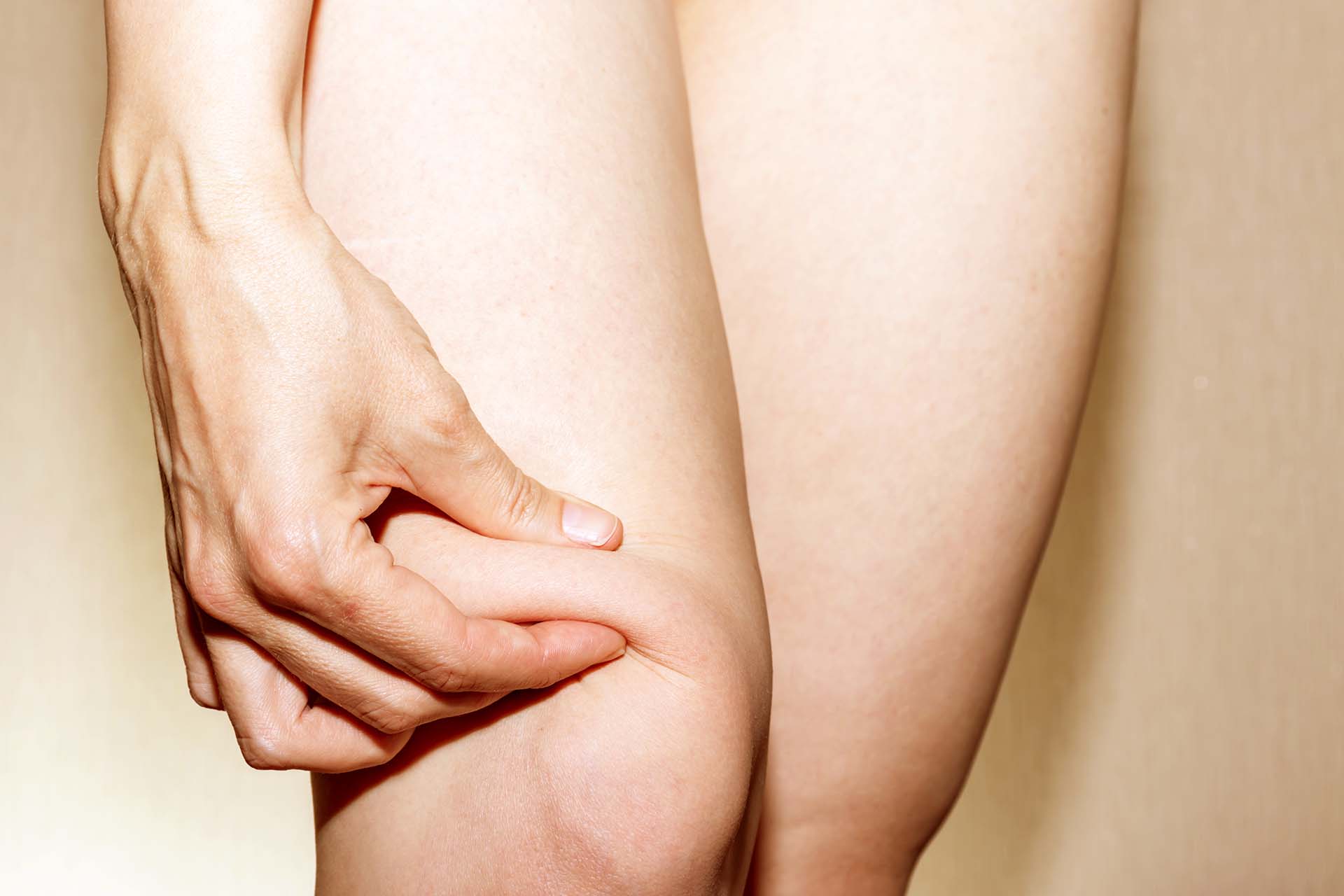
Non surgical Knee Wrinkle Treatment
-
Essential Aesthetics
-
October 15, 2021
-
CoolSculpting dermal fillers KYBELLA® microneedling skin care
You may have heard of aesthetic treatments for various body parts, including the face, neck, and buttocks. Now, knees can also be added to the list!
The knees are frequently forgotten when it comes to aesthetic treatments, but like other regions of your body, they might benefit from some tender loving care.
Taking Care of Your Knees
Similar to our face and neck, it is important to take preventative measures to protect our knees. Avoiding the sun and using sunscreen on the knees will prevent sun damage that causes the skin to age faster. Keeping the skin on and around the knees moisturized and using retinol products on the area also helps keep the skin more plump and youthful-looking.
As we age, the skin around our knees undergoes natural changes. Over time, factors such as decreased collagen and elastin production, sun exposure, and repetitive movements or friction from bending and kneeling can cause wrinkles and fine lines to develop on the knee skin.
What causes wrinkles to form around the knees?
Due to the position of your knees and gravity, the skin on and around the knee is more prone to sagging, wrinkling, and drooping. However, some people may have loose skin or pockets of fat above the knee due to genetic predisposition, weight gain or subsequent weight loss, or a natural aging process. Regardless of the cause or reason you don’t like how your knees look, at Essential Aesthetics, we offer a variety of treatments that can help!
Kybella Injection
Kybella is a treatment approved by the FDA and injected to primarily reduce submental fat, commonly known as a "double chin." Its formula contains deoxycholic acid, a naturally occurring substance that helps break down and absorb fat.
While Kybella has been specifically approved for use in the submental area, its use for reducing fat in other areas, such as the knees, is considered an off-label use. Kybella can be injected into the knees to break up and dissolve the fat cells above the knee. After receiving a kybella injection, the body's natural healing process is triggered, increasing collagen production in the knee area. This boost in collagen may result in subtle skin tightening as well as fat reduction in the knee area.
CoolSculpting
Coolsculpting is a noninvasive fat-freezing procedure that involves cryolipolysis. It can be applied to the fat above the knees to target fat cells, permanently destroying the fat cells above the knee and enhancing the contour of your legs.
While CoolSculpting has not been specifically approved for treating knee fat, it may be considered an off-label treatment for that area. Off-label use refers to a treatment method that regulatory authorities, such as the FDA, have not specifically approved. This approach is based on the clinical judgment and medical evidence available.
The effectiveness of CoolSculpting for reducing knee fat will depend on various factors, including the amount of fat in the knee area, the distribution of fat, and the individual's unique body characteristics.
RF Microneedling
Microneedling combined with Radiofrequency stimulates collagen and elastin fiber rejuvenation and results in the overall tightening of the skin above the knee.
Sculptra
Diluted Sculptra, a dermal filler made of bio-stimulating poly-L-lactic acid (PLLA), can be injected into the wrinkles and loose skin of the knees to improve their skin quality and contour.
Thread Lift
Thread lift procedures are not commonly performed on the knees. The skin on the knees is thicker and subject to different stresses and movements compared to the facial skin. Thread lifts are primarily designed to address facial laxity, and their efficacy and safety for knee rejuvenation have not been extensively studied or established. However, similar to how threads can be used to lift the eyebrows and jawline, they can also lift the skin on the knees. Threads stimulate long-term collagen production, so your knees will always look better.
Tretinoin
Similar to the wrinkles on our faces, the wrinkles on the knees can also be treated with tretinoin, more famously known as Retin-A. This gold standard for anti-aging typically takes about eight weeks to 6 months of treatment to see a noticeable improvement in the skin. Tretinoin therapy also works synergistically with any of the treatments mentioned above.
How long do treatments for knee wrinkles last?
Knee treatments can last anywhere from 1 to 2 years, depending on the treatment. As with most procedures, your knees will require maintenance sessions.
Get Rid of Your Knee Wrinkles Today!
If you are bothered by the appearance of your knees, call or text our office at 925.855.1773 or request a consultation and get one step closer to more contoured and younger knees.
